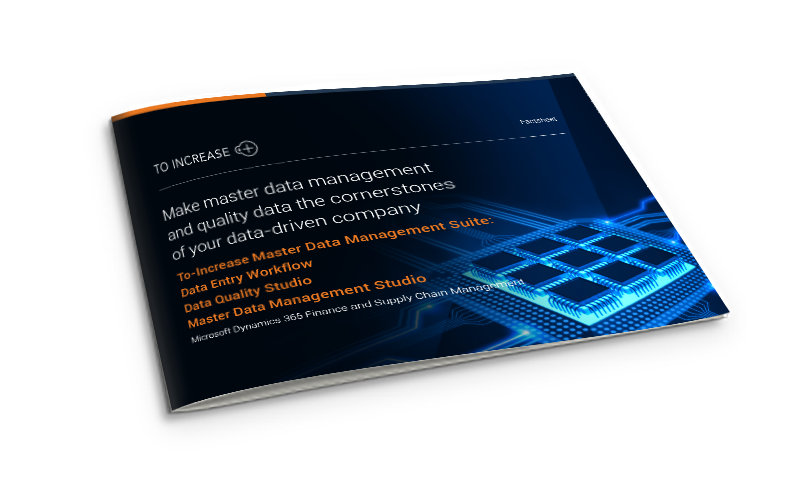Data flows through every business process and system in an organization. To be able to derive ‘meaning’ and value from data, the data needs to be accurate, validated, consistent, and organized. If data is not managed by policies and guidelines in place, you could have data breaches, inefficient decision making, data duplication, and many other challenges to deal with. Although data management and data governance are hand in glove and have some overlapping attributes, they are not the same thing as some people would like to believe.
As developers of solutions with 17 years of experience that complement data governance policies and help in data management, we thought it was important to talk about the importance of both and explain the difference.
As organizations are looking for ways to use their data to improve and streamline operations and make better and more informed decisions, it is important that they understand how data management and data governance processes, both play an imperative role in this process of getting data ready to be evaluated, in order to derive ‘meaning’. Therefore, in this blog we help you understand the meaning of data management, and data governance and the differences between the two.
What is data management?
In order to have the ‘determining truth’ as Scott Taylor, author of Telling Your Data Story puts it, you need data management before you can derive ‘meaning’. Therefore, data management is the framework and the implementation of several areas that help you arrive at this determining truth. These include processes, policies, architecture, data stewardship, master data management, data quality management, compliance, and tools that help you deliver the six integral data pillars: completeness, accuracy, validity, integrity, timeliness, and consistency.
Without these data management techniques and data governance policies, you cannot analyze data and derive any meaning as the exercise will be futile and pointless. Therefore, data management starts from the time the data is created or entered into one of your business systems and will be managed, monitored, and controlled till the retirement of the data.
What areas come under data management?
Let’s go over all the areas that come under data management.
- Data governance involves the strategy, the people, the tools, and processes involved in data management. We cover data governance in detail after this section.
- Data quality management is the process of validating and cleaning data to maintain an accurate, single source of truth.
- Master data management is a function that helps organizations control, manage, and distribute data within the organization and between business systems. A master data management tool is used to support this function.
- Metadata management involves outlining policies to ensure metadata can be easily tracked, integrated, or shared across the organization. Meta data is kind of like a data log that describes other data.
- Data catalog is a method to categorize data to better organize data. This is also a means to manage meta data and a data catalog also creates a holistic picture of all your organization’s data.
- Data warehouses is a consolidated source for all your data. ETL or data extract transfer loads is the means by which data is transferred into the data warehouse. This is an automated process once set and in practice, but you need to set up a data pipeline process wherein data is transferred between systems.
- Data architecture is the structure that dictates how the data should flow in an organization.
- Security and compliance dictates guidelines for data security and steps to manage data breaches.
- Data stewardship is a job role that involves the management, security, organization, storage, and distribution of data. Data stewards are responsible for all the functions under data management.
- Data Integration and Interoperability provides organizations with a unified view all of the data. Without data integration between systems there will be data silos and data duplication. If there is no data interoperability the movement of data between systems or the ability for multiple systems to communicate will be inhibited.
- Data modeling is done to extract and prepare validated data prior to drawing business insights. A data model provides a blueprint of the data between systems in its lifecycle.
What is data governance? And how is it related to data management?
Data governance on the other hand is a core subset of data management; it outlines a framework or a set of policies, rules, standards, people involved, and processes that help in the management of data. Since data governance issues guidelines and a strategy for all the other areas of data management it plays a crucial role in the process.
Data governance is what helps turn data into truth which can then be analyzed and used for reporting. Data governance has four integral pillars including the processes, the people, the standards, and the rules. If an organization doesn’t implement all four pillars, their data governance processes will not be rock solid.
Without data governance processes in place, the company will be at the risk of poor data, compliance issues, operational issues, and several other risks. Data governance outlines rules and regulations for every scenario for the lifecycle of the data set and this includes the business areas and data owners involved at every stage. Data governance also provides accountability and ownership of the people involved. Additionally, you need definitions to maintain consistency and accuracy of the data across the organization.
So, while data governance outlines a strategy, it needs to be supported by software. There are several tools that you could use to implement data governance such as software for data quality management, master data management, application integration, data entry workflow, security and compliance, and data modeling to name a few.
The differences between data management and data governance
If data management is the whole, then data governance is the most important piece of the puzzle…
Since data governance is an overarching part of data management, you could compare it to the king in the game of chess. Without data governance, the game is lost. However, without the other pieces, you cannot play the game either. What we mean to say is although data governance is important, without putting it into practice it is just guidelines outlined in a document. Meaning cannot be derived from the data unless all the other areas of data management play their necessary roles based on the processes, policies, standards and people outlined as per data governance.
Data management is a practice and data governance is the strategy…
A lot of people use the terms interchangeably. They are interlinked but not the same thing. As we have earlier said data governance might be important and help you draw up a framework with policies, standards, rules, and responsibilities but if you miss out on implementing all the other areas of data management and do not implement any tools to achieve your data management goals, it will be difficult to derive any meaning after determining your one source of truthful data.
You need technology to support your data management goals…
Data governance is a strategy that needs brainpower and alignment of teams to create. However, to achieve data management you need technology or tools to support your goals. Although these might be goals outlined in your data governance strategy, but you do not need any software to create a data governance framework.
The roles and responsibilities differ for both…
To outline and draw out a data governance strategy, it is important to include key members from all functions, as data stewards if working in silos will not be able to align with the needs of the organization. These key members, however, will not be responsible for the day-to-day operations or implementation of software once the data governance strategy is in place.
For data management however, the key responsibility lies on the shoulders of the data stewards and IT team. They will be responsible for managing the systems, software, issues, and security threats if any to be addressed immediately. For the database administrators and data stewards they are responsible for both data governance and data management.
The scale of the organization matters…
Data management might not be a necessary function for a home business, for example, however, for a small organization, you will still need valid and consistent data that will help you scale. A small organization will know the details of the customers and can probably maintain good relationships with their customers without looking at their records.
However, a large organization like Walmart for example will need a data management practice and data governance strategy to manage all their data in order to make more impactful business decisions based on the business intelligence derived from their data and customer records.
Can your organization benefit from data governance and data management?
Data by itself cannot be powerful unless you have strategies and policies in place to streamline, maintain accuracy and consistency, and organize it. Although a lot of organizations are investing in data preparation and business analytics, they are yet to invest time and resources in any kind of data management functions which means they are unable to derive the ‘meaning’ they are looking for as they do not have a refined source of ‘truth’.
Therefore, data management is an important step that will help you fuel several other benefits such as improved decision-making, streamlined processes, and accelerated growth. And a data governance strategy will be your starting point to help you understand what your organization needs in terms of the functions under data management. Although we have covered 11 disciplines under data management, your organization might benefit from implementing only some of them.
Our recommendation is to follow the below steps to start your journey to data transformation:
- First, do you have data governance strategies outlined for your organization?
- Do you have designated resources to help you with data governance and data management processes? If not, look at hiring resources.
- Once you have data stewards and/or data administrators you can work on a data governance strategy along with key members across the organization. This step will help you understand what other functions you will need under data management.
- Assess the data in your existing systems, such as ERP, CRM, and other business systems.
- Next look at systems integrations. Are your systems integrated or are you swimming in issues due to data duplication?
Once you understand the relationship between data management and data governance, and how they work together, you can decide whether this is a path your business would benefit from or not. If used to their full potential, the power of them combined can help your organization maximize the potential of data and draw powerful business insights that will help you make impactful decisions. These decisions could help you scale and grow your organization and minimize losses.
Once you have the above steps in place and are looking for solutions that fit into your data governance strategy, you could download our factsheet. If you have questions specific to your policies or guidelines, you could reach out to our experts for their recommendations.





